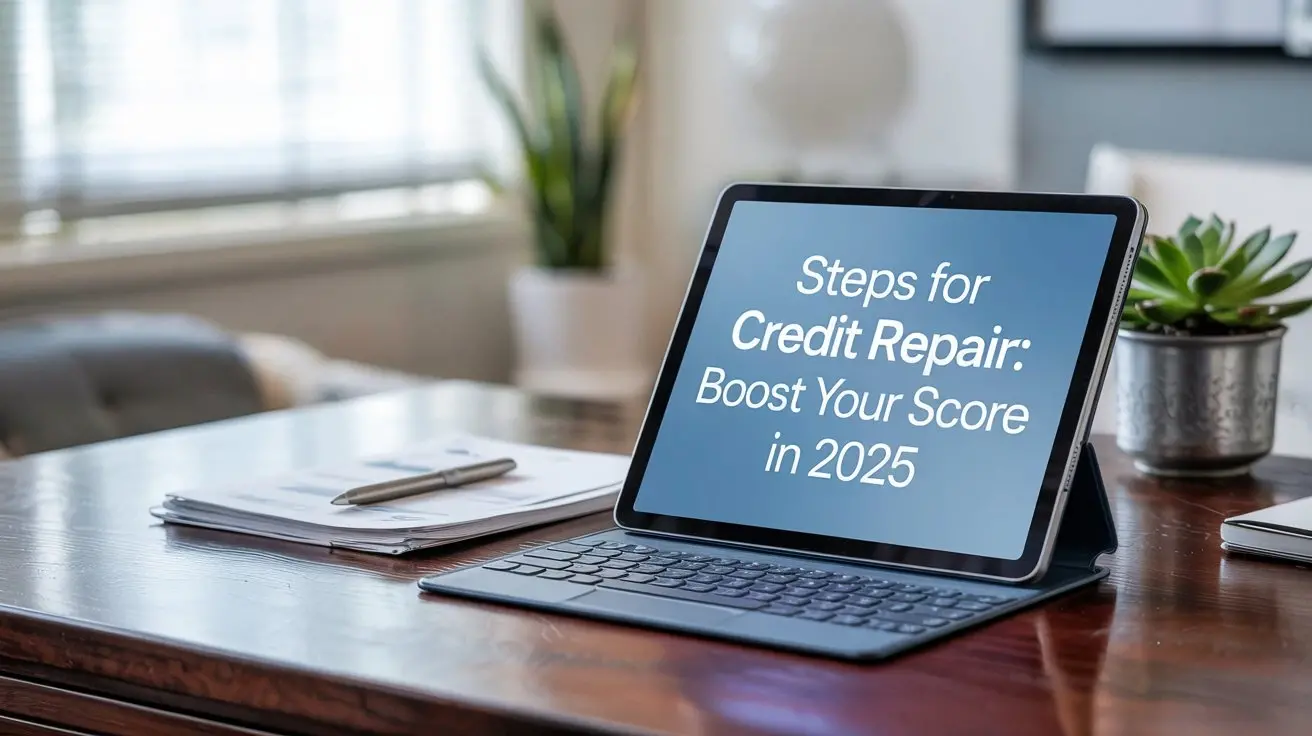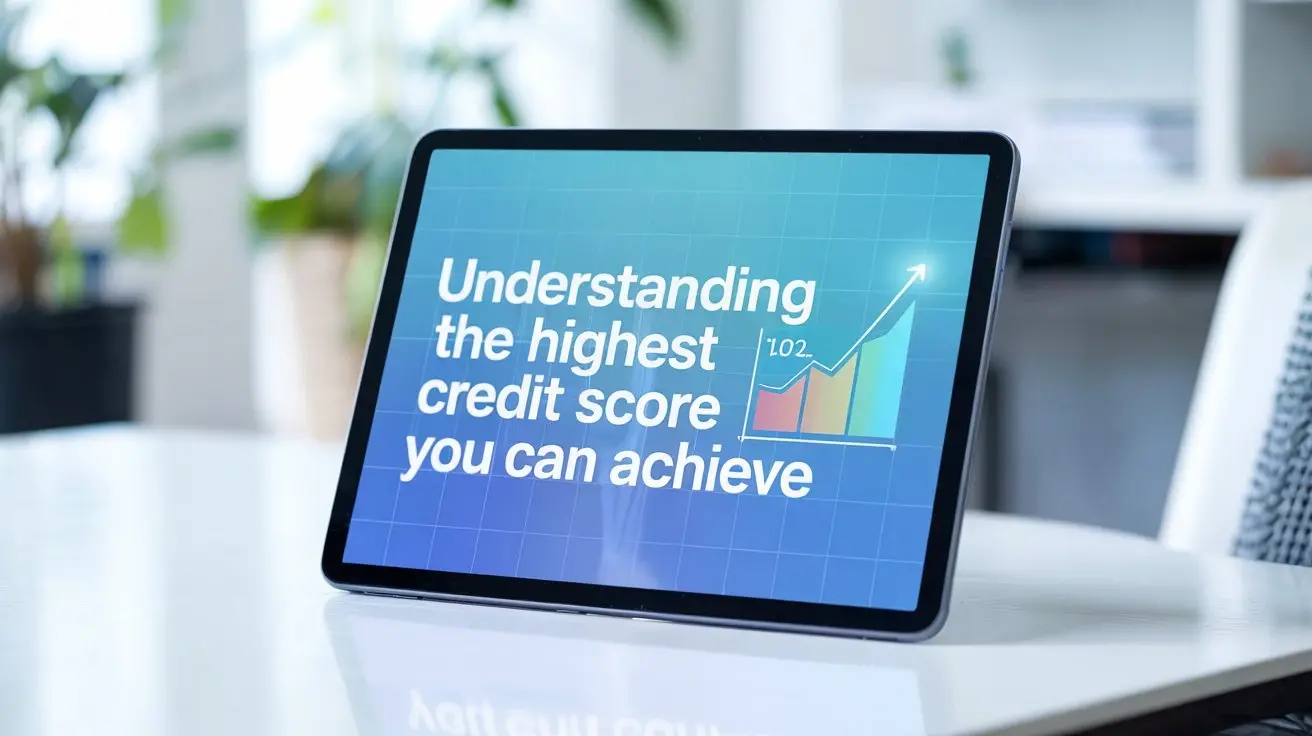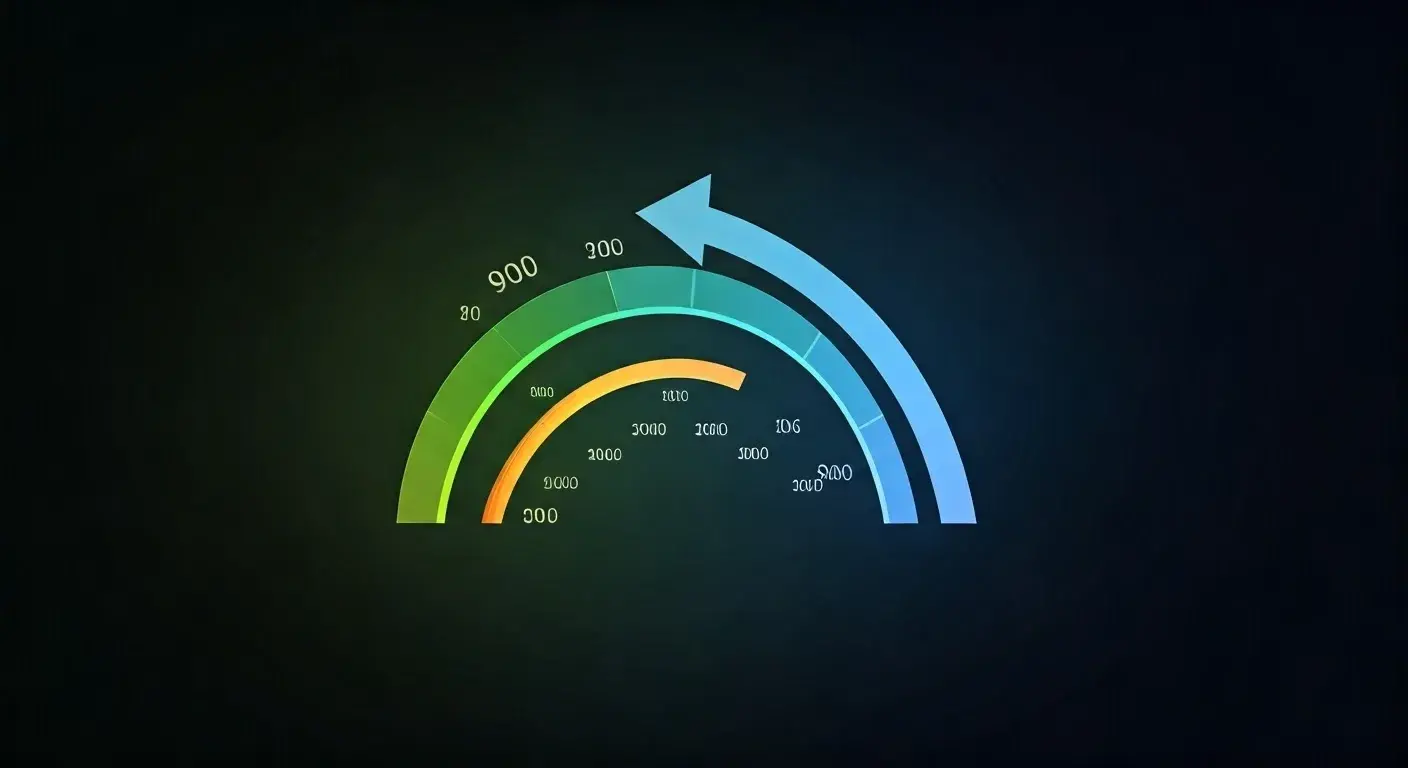-
Posted on: 27 Jan 2025

-
What is a 635 Credit Score?
A 635 credit score is generally considered to be in the "fair" or "average" range. While not ideal, it's not a score that automatically disqualifies you from all forms of credit. Understanding what this score signifies is the first step towards leveraging it effectively or improving it for better financial opportunities in 2025.
Understanding Credit Score Ranges
Credit scores are numerical representations of your creditworthiness, used by lenders to assess the risk of lending you money. The most widely used scoring model is the FICO score, which ranges from 300 to 850. Understanding where a 635 score falls within the broader spectrum is crucial for setting realistic expectations. These ranges are not rigid rules but general guidelines that lenders often use.
FICO Score Ranges and Their General Meaning (2025)
The FICO scoring model categorizes scores into several tiers:
- Exceptional: 800-850. This range indicates excellent creditworthiness. Borrowers with exceptional scores typically receive the best interest rates and terms.
- Very Good: 740-799. Scores in this range are highly desirable, often qualifying for premium loan offers and favorable rates.
- Good: 670-739. This is a strong score range, indicating a responsible credit history. Many lenders view these scores favorably, offering competitive rates.
- Fair: 580-669. A 635 credit score falls squarely within this category. It signifies that while you have a credit history, there may be some past issues or limited credit experience that lenders consider a moderate risk. You can still qualify for credit, but terms might be less favorable than for those with higher scores.
- Poor: 300-579. This range indicates significant credit risk. Lenders are hesitant to extend credit to individuals with poor scores, and if they do, it often comes with very high interest rates and strict terms.
It's important to note that these ranges can vary slightly between different credit scoring models (like VantageScore) and even between different lenders. However, the general sentiment remains consistent: a 635 score is above the "poor" category but below the "good" and "very good" tiers.
The Role of Credit Bureaus
Your credit score is generated based on information reported by three major credit bureaus: Equifax, Experian, and TransUnion. Lenders report your credit activity to these bureaus, which then compile your credit history. This history is used to calculate your score. Understanding how these bureaus operate can help you manage your credit more effectively.
VantageScore vs. FICO
While FICO is the most prevalent, VantageScore is another popular credit scoring model. Its ranges are similar, though sometimes with slightly different breakpoints. For instance, VantageScore might categorize 635 as "Good" or "Fair" depending on the specific model version and its current benchmarks. Regardless of the model, a score around 635 generally suggests a need for improvement to access the most advantageous credit products.
Is 635 Good or Bad? The Nuances Explained
The question "Is 635 a good credit score?" doesn't have a simple yes or no answer. It's more nuanced and depends heavily on the context – specifically, what you're trying to achieve with your credit. For some lenders and some types of credit, 635 might be sufficient, while for others, it could be a significant hurdle.
What Lenders See in a 635 Score
When a lender reviews a credit application with a 635 score, they see a borrower who has likely had some credit challenges or has a relatively thin credit file. This doesn't necessarily mean you're a high risk, but it signals to them that you haven't consistently demonstrated the highest levels of credit management. They might interpret it as:
- Potential for Higher Default Risk: Compared to someone with a 750 score, the statistical probability of default might be perceived as higher.
- Limited Credit History: If the score is due to a lack of credit activity rather than negative marks, lenders might see it as an unknown rather than a known risk.
- Past Credit Issues: If the score is a result of late payments, high credit utilization, or collections, lenders will scrutinize these past issues closely.
Comparing 635 to Other Scores
To truly understand if 635 is "good," let's compare it to other common score tiers:
- vs. 750+: A 635 score is significantly lower than scores in the 750+ range. With a 750+ score, you'd likely qualify for the lowest interest rates on mortgages, auto loans, and credit cards, and have access to premium rewards cards.
- vs. 700-749: This is the "good" to "very good" range. A 635 score is still below this, meaning you might miss out on the most competitive offers, but you're closer than someone with a much lower score.
- vs. 580-669 (Fair): This is where 635 resides. Within this "fair" range, 635 is on the higher end, suggesting you are performing better than someone with a 580 score. This is a critical distinction.
- vs. Below 580 (Poor): A 635 score is considerably better than a "poor" score. It opens up more possibilities for credit, whereas a poor score might limit you to secured credit cards or subprime lenders with very high costs.
Context is Key: What Are You Applying For?
The "goodness" of a 635 credit score is highly dependent on the financial product you're seeking:
- Mortgages: While some lenders might offer FHA loans with scores in the high 500s, a 635 score is often at the lower end for conventional mortgages. You might qualify, but expect higher interest rates and potentially larger down payments.
- Auto Loans: For car loans, a 635 score can get you approved, but the interest rates could be substantially higher than for borrowers with good credit, increasing your monthly payments and the total cost of the vehicle.
- Credit Cards: You can likely get approved for some credit cards, particularly those designed for fair credit. These often have lower credit limits and higher Annual Percentage Rates (APRs). Premium rewards cards are generally out of reach.
- Personal Loans: Approval for personal loans is possible, but again, interest rates will likely be higher.
In summary, a 635 credit score is not ideal, but it's not a dead end. It signifies a need for improvement to unlock better financial terms. It's a score that says, "I've managed credit, but not perfectly, and I'm not yet in the prime borrower category."
What Loans Can You Get with a 635 Credit Score?
Having a 635 credit score means you're in the "fair" credit range. This score can be a hurdle for obtaining the most competitive loan offers, but it doesn't mean you're locked out of the credit market entirely. Many lenders cater to borrowers with fair credit, though the terms and interest rates will likely be less favorable than for those with higher scores.
Types of Loans Potentially Available
Here's a breakdown of the types of loans you might be able to secure with a 635 credit score:
1. Auto Loans
Securing an auto loan with a 635 credit score is often achievable, especially if you're willing to accept a higher interest rate. Many auto lenders, including dealerships and specialized auto finance companies, work with borrowers in the fair credit range. To increase your chances of approval and potentially secure a slightly better rate, consider:
- Making a Larger Down Payment: This reduces the lender's risk.
- Opting for a Less Expensive Vehicle: A smaller loan amount is easier to approve.
- Shopping Around: Compare offers from multiple lenders, including banks, credit unions, and online lenders.
Example: A borrower with a 635 score might be approved for a 60-month auto loan for $20,000 at an APR of 9-12%, whereas someone with a 750 score might get 5-7%. This difference translates to hundreds or even thousands of dollars in extra interest over the life of the loan.
2. Personal Loans
Personal loans are unsecured loans that can be used for various purposes, such as debt consolidation, home improvements, or unexpected expenses. With a 635 credit score, approval for personal loans is possible, but expect higher interest rates. Lenders specializing in fair credit or online lenders are often more accessible.
- Secured Personal Loans: Offering collateral (like a savings account or CD) can significantly improve your chances of approval and lower the interest rate.
- Co-signer: A co-signer with good credit can help you get approved and secure better terms.
Example: A $10,000 personal loan at 15% APR over 3 years will cost significantly more in interest than the same loan at 8% APR.
3. Mortgages (with Caveats)
Obtaining a mortgage with a 635 credit score can be challenging for conventional loans, which often require scores of 620 or higher, but 635 is on the lower end of acceptable. However, government-backed loans are more accessible:
- FHA Loans: The Federal Housing Administration (FHA) insures loans for borrowers with lower credit scores. While the minimum FHA score is typically 580 for a 3.5% down payment, a 635 score is more comfortable. You might still face a higher mortgage insurance premium (MIP).
- VA Loans: For eligible veterans, VA loans often have more flexible credit score requirements, and a 635 might be acceptable, though lenders set their own overlays.
- USDA Loans: For rural properties, USDA loans can also be an option with potentially more lenient credit requirements.
Note: Even if you qualify, expect a higher interest rate and potentially a larger down payment requirement for conventional mortgages with a 635 score.
4. Secured Credit Cards
Secured credit cards are an excellent tool for building or rebuilding credit. They require a cash deposit that typically equals your credit limit. With a 635 score, you should be able to qualify for a secured card. This is a practical way to demonstrate responsible credit usage.
- Benefits: They report to credit bureaus, helping to increase your score over time.
- Goal: The aim is to graduate to an unsecured card after demonstrating responsible use.
5. Credit-Builder Loans
These are small loans offered by some credit unions and banks specifically designed to help individuals build credit history. The loan amount is typically held in a savings account and released to you after you've made all the payments. It's a safe way to establish a positive payment history.
Loans to Be Cautious About
With a 635 credit score, you should be wary of:
- High-Interest Unsecured Personal Loans: Some lenders offer unsecured loans to people with fair credit, but the APRs can be exorbitant, making them difficult to repay.
- Payday Loans: These are extremely high-cost, short-term loans that should be avoided at all costs, regardless of credit score.
- Subprime Mortgages: While some might be available, they often come with predatory terms and extremely high interest rates.
The key takeaway is that while a 635 credit score limits your options for the best deals, it doesn't prevent you from accessing credit. Focus on lenders who specialize in fair credit and be prepared for higher costs. The most important strategy is to use any credit you obtain responsibly to improve your score for future opportunities.
The Impact of a 635 Credit Score on Interest Rates
Your credit score is one of the most significant factors lenders consider when determining the interest rate they will charge you for a loan or credit card. A 635 credit score, residing in the "fair" credit category, will almost invariably lead to higher interest rates compared to individuals with good or excellent credit. This difference in interest can translate into substantial extra costs over the life of a loan.
How Interest Rates Work
Lenders use interest rates to compensate for the risk they take when lending money. A higher credit score indicates a lower risk of default, allowing lenders to offer lower interest rates. Conversely, a lower credit score suggests a higher risk, prompting lenders to charge more interest to offset potential losses.
Illustrative Examples of Interest Rate Differences (2025 Estimates)
To illustrate the impact, let's consider hypothetical scenarios for common loan types:
1. Mortgages
For a $300,000, 30-year fixed-rate mortgage:
- Credit Score 740+: Might qualify for an interest rate around 6.5%. Monthly P&I: ~$1,896. Total Interest Paid: ~$382,500.
- Credit Score 635-669 (Fair): Might be offered an interest rate around 8.5%. Monthly P&I: ~$2,307. Total Interest Paid: ~$530,500.
Difference: The borrower with a 635 score would pay an additional ~$148,000 in interest over 30 years, simply due to the higher interest rate.
2. Auto Loans
For a $25,000, 60-month auto loan:
- Credit Score 740+: Could receive an APR of 5.5%. Monthly Payment: ~$483. Total Interest Paid: ~$3,980.
- Credit Score 635-669 (Fair): Might face an APR of 10.5%. Monthly Payment: ~$524. Total Interest Paid: ~$6,440.
Difference: The borrower with a 635 score would pay approximately $2,460 more in interest for the same vehicle.
3. Personal Loans
For a $10,000, 36-month personal loan:
- Credit Score 740+: Might get an APR of 8%. Monthly Payment: ~$313. Total Interest Paid: ~$1,268.
- Credit Score 635-669 (Fair): Could be offered an APR of 18%. Monthly Payment: ~$371. Total Interest Paid: ~$3,356.
Difference: The higher interest rate on a personal loan can add over $2,000 to the cost of borrowing.
4. Credit Cards
For a credit card with a $5,000 limit:
- Credit Score 740+: Might have an APR of 18-22%.
- Credit Score 635-669 (Fair): Could have an APR of 25-30% or even higher.
The impact here is less about total interest paid over a fixed term and more about the cost of carrying a balance. A higher APR means that a larger portion of your monthly payment goes towards interest, making it harder to pay down the principal and potentially leading to debt accumulation.
Beyond Interest Rates: Other Consequences
The impact of a 635 credit score isn't limited to just higher interest rates. It can also affect:
- Loan Approval Odds: You may be denied for loans altogether, or only approved by lenders with very high fees.
- Credit Limits: Credit cards and lines of credit will likely come with lower limits.
- Fees: Lenders might impose higher origination fees, annual fees, or other charges.
- Down Payment Requirements: For mortgages and auto loans, you might be required to make a larger down payment to mitigate the lender's risk.
- Insurance Premiums: In many states, insurance companies use credit-based insurance scores to set premiums for auto and homeowners insurance. A lower score can lead to higher insurance costs.
The Value of Improving Your Score
Even a modest improvement in your credit score can have a significant financial benefit. Moving from a 635 to a 670 (crossing into the "good" category) could save you thousands of dollars on a mortgage or auto loan. Focusing on strategies to improve your credit score is a worthwhile investment in your financial future.
Strategies to Improve a 635 Credit Score
If your credit score is around 635, you're in a position where targeted efforts can yield noticeable improvements. The key is to address the factors that most significantly influence your credit score: payment history, credit utilization, length of credit history, credit mix, and new credit. Focusing on these areas will pave the way for a stronger score and better financial opportunities in 2025 and beyond.
1. Prioritize On-Time Payments
Payment history is the single most impactful factor in your credit score, accounting for about 35% of your FICO score. Even a single late payment can significantly damage your score.
- Set Up Autopay: Automate payments for all your bills (credit cards, loans, utilities) to ensure they are never missed.
- Use Payment Reminders: Utilize calendar alerts or budgeting apps to remind you of due dates.
- Catch Up on Delinquencies: If you have any past-due accounts, bring them current immediately.
- Communicate with Lenders: If you anticipate difficulty making a payment, contact your lender *before* the due date to discuss potential arrangements.
2. Reduce Credit Utilization Ratio (CUR)
Your credit utilization ratio is the amount of credit you're using compared to your total available credit. It accounts for about 30% of your FICO score. A high CUR signals to lenders that you may be overextended.
- Aim for Below 30%: Ideally, keep your CUR below 30%. For a 635 score, aiming for below 10% can be even more beneficial.
- Pay Down Balances: Focus on paying down credit card balances, especially those with the highest utilization.
- Request a Credit Limit Increase: If you have a good payment history with a particular card issuer, consider requesting a credit limit increase. This can lower your CUR if your spending remains the same.
- Spread Balances: If possible, spread your balances across multiple cards to avoid maxing out any single card.
Example: If you have a credit card with a $5,000 limit and a $3,000 balance, your CUR is 60%. Paying down the balance to $1,500 would bring your CUR to 30%, significantly helping your score.
3. Avoid Opening Too Much New Credit
Applying for multiple new credit accounts in a short period can negatively impact your score. Each hard inquiry (a credit check from a lender) can slightly lower your score, and opening many new accounts can make you appear riskier.
- Be Strategic: Only apply for credit when you genuinely need it.
- Space Out Applications: If you need multiple credit products, space out your applications over several months.
- Understand Inquiries: Mortgage and auto loan inquiries within a short window (typically 14-45 days) are often treated as a single inquiry for scoring purposes, allowing you to shop for the best rates without excessive penalty.
4. Maintain Long-Standing Accounts
The length of your credit history is about 15% of your FICO score. Older, well-managed accounts contribute positively to your score.
- Keep Old Accounts Open: Unless there's a compelling reason (like a high annual fee on an unused card), keep older credit accounts open, even if you use them sparingly.
- Use Them Periodically: Make a small purchase on older cards occasionally and pay it off immediately to keep them active and demonstrate continued responsible use.
5. Diversify Your Credit Mix
Having a mix of different types of credit (e.g., credit cards, installment loans like a mortgage or auto loan) can positively influence your score, accounting for about 10% of your FICO score. However, this factor is less critical than payment history and utilization.
- Don't Open Accounts Solely for Mix: It's generally not advisable to open new accounts solely to improve your credit mix, especially if you don't need them. Focus on the other, more impactful factors.
- Natural Progression: As you finance larger purchases like a car or home, your credit mix will naturally diversify.
6. Address Errors on Your Credit Report
Errors on your credit report can unfairly lower your score. Take the time to review your reports from Equifax, Experian, and TransUnion.
- Obtain Free Reports: You can get free copies of your credit reports annually from each bureau at AnnualCreditReport.com.
- Dispute Inaccuracies: If you find any errors (e.g., accounts that aren't yours, incorrect late payment markers), dispute them with the credit bureau and the creditor.
7. Consider a Credit-Builder Product
If your credit history is thin or you've had significant past issues, a credit-builder loan or a secured credit card can be very effective.
- Secured Credit Card: Make a deposit, use the card responsibly for everyday purchases, and pay the balance in full each month.
- Credit-Builder Loan: Make regular payments on a small loan that's held in an account, demonstrating your ability to repay.
Timeline for Improvement
Improving a 635 credit score takes time and consistent effort. You might see some positive movement within 3-6 months of implementing these strategies, but significant gains often take 12-24 months. Negative marks like late payments or collections will remain on your report for up to seven years, but their impact diminishes over time as they are offset by positive activity.
Common Mistakes That Lower Credit Scores
Understanding what can harm your credit score is just as important as knowing how to improve it. Many individuals inadvertently make mistakes that lead to a lower credit score, sometimes without realizing the full impact. For a score hovering around 635, avoiding these pitfalls is crucial for climbing into the "good" credit range.
1. Missing Payments or Paying Late
This is the most damaging mistake. A single late payment can drop your score by tens or even hundreds of points, depending on your existing score and how late the payment is. Consistent late payments are devastating.
- Impact: Lenders see this as a sign of financial instability and a higher risk of default.
- Severity: A 30-day late payment is less damaging than a 60- or 90-day late payment.
2. High Credit Utilization Ratio (CUR)
As mentioned, using a large percentage of your available credit signals financial distress. It suggests you might be relying heavily on credit to manage your expenses.
- Thresholds: Exceeding 30% CUR is generally considered high. Using more than 50% is very detrimental.
- Impact: Lenders perceive this as a sign of over-indebtedness and a higher likelihood of defaulting on new obligations.
3. Closing Old, Unused Credit Cards
While it might seem logical to close accounts you don't use, this can actually hurt your credit score. Closing an account reduces your total available credit, which can increase your CUR if you carry balances on other cards. It also reduces the average age of your credit accounts, impacting the length of your credit history.
- Exception: If an account has a high annual fee and you don't use it, closing it might be a wise financial decision, but understand the potential credit score impact.
4. Applying for Too Much Credit Too Quickly
Each time you apply for new credit, the lender typically performs a "hard inquiry" on your credit report. Multiple hard inquiries within a short period can suggest you're desperate for credit, which can lower your score. While rate shopping for mortgages or auto loans within a short window is usually consolidated, applying for numerous credit cards or personal loans rapidly is viewed negatively.
- Hard vs. Soft Inquiries: Hard inquiries occur when you apply for credit. Soft inquiries (like checking your own credit score) do not affect your score.
5. Not Monitoring Your Credit Report
Errors on your credit report can occur, such as incorrect late payment markers, accounts that don't belong to you, or inaccurate personal information. If left unaddressed, these errors can artificially lower your score.
- Regular Checks: It's essential to review your credit reports from Equifax, Experian, and TransUnion at least annually.
- Dispute Errors Promptly: Act quickly to dispute any inaccuracies you find.
6. Co-signing for Someone Else
When you co-sign a loan or credit card, you become equally responsible for the debt. If the primary borrower misses payments or defaults, it will negatively impact your credit score just as severely as if it were your own debt.
- Risk Assessment: Before co-signing, consider the borrower's ability to repay and the potential consequences for your own credit.
7. Carrying Balances on Credit Cards
While having credit cards is good, consistently carrying high balances and only making minimum payments means you're not reducing your debt effectively. This contributes to a high CUR and suggests you may be struggling financially.
- Interest Accumulation: High balances also mean you're paying significant interest, which can make it harder to pay off debt.
8. Not Having Any Credit or Having Limited Credit History
This is often referred to as having a "thin file." Lenders need to see a history of responsible credit management to assign a score. If you have very little or no credit activity, lenders have no data to assess your risk.
- Solutions: This is where secured credit cards and credit-builder loans are invaluable for establishing a credit history.
9. Defaulting on Loans or Bills
This is a severe issue. Defaulting means failing to meet the terms of a loan agreement, often leading to accounts being sent to collections or legal action. This has a catastrophic impact on your credit score.
- Collections: Accounts in collections will significantly lower your score and remain on your report for up to seven years.
10. Frequent Charge-offs
A charge-off occurs when a creditor decides a debt is unlikely to be collected and writes it off as a loss. This is a serious negative mark on your credit report and will severely damage your score.
Avoiding these common mistakes is paramount for anyone looking to improve their credit score from the "fair" range. By focusing on responsible credit habits, you can systematically build a stronger financial profile.
Building Credit from Scratch vs. Repairing a 635 Score
The journey to a healthy credit score can begin from zero or involve recovering from past missteps. Understanding the difference between building credit from scratch and repairing a score like 635 is key to applying the right strategies. While both aim for a better credit standing, their starting points and primary challenges differ significantly.
Building Credit from Scratch
This applies to individuals who are new to credit, often young adults or recent immigrants. They have little to no credit history, meaning lenders have no data to assess their creditworthiness. The main goal here is to establish a positive credit footprint.
Key Challenges for Building Credit from Scratch:
- Lack of History: No track record for lenders to evaluate.
- Limited Options: Difficulty qualifying for traditional credit cards or loans without a co-signer or collateral.
- Establishing Trust: Proving to lenders that you are a reliable borrower.
Effective Strategies for Building Credit:
- Secured Credit Cards: These are often the first step. A cash deposit serves as collateral, making approval easy. Responsible use helps build a history.
- Credit-Builder Loans: These loans are designed to help establish credit. The loan amount is held in a savings account and disbursed after successful repayment.
- Authorized User Status: Being added as an authorized user on a trusted person's credit card can grant you access to their credit history, which may appear on your report. However, the primary cardholder's activity directly impacts your credit.
- Co-signer: A co-signer with good credit can help you get approved for a loan or credit card, but they are also responsible if you default.
- Store Credit Cards: While often having high APRs, these can be easier to obtain and can contribute to your credit history.
The focus for building credit from scratch is on creating positive entries on your credit report and demonstrating consistent, responsible behavior over time.
Repairing a 635 Credit Score
A 635 score indicates that you have a credit history, but it likely contains some negative information or a lack of consistently positive activity. The primary goal here is to mitigate the impact of past issues and build upon existing positive credit management. It's about improving an existing, albeit imperfect, credit profile.
Key Challenges for Repairing a 635 Score:
- Negative Marks: The score likely reflects past late payments, high credit utilization, collections, or other derogatory information.
- Lower Approval Odds: Difficulty qualifying for prime interest rates or even approval for certain credit products.
- Higher Costs: Loans and credit cards come with higher APRs and potentially more fees.
Effective Strategies for Repairing a 635 Score:
- Address Payment History: Ensure all current payments are made on time. If there are past due accounts, bring them current immediately.
- Reduce Credit Utilization: This is paramount. Pay down credit card balances aggressively to lower your utilization ratio.
- Dispute Errors: Thoroughly review credit reports for inaccuracies and dispute them with the credit bureaus.
- Avoid New Negative Marks: Prevent any further late payments, defaults, or excessive credit applications.
- Strategic Use of Credit: Use existing credit responsibly. If you have a credit card, use it for small purchases and pay it off in full each month.
- Consider Credit-Building Tools (if applicable): If the 635 score is due to a thin file *and* past issues, a secured card or credit-builder loan can still be beneficial to add positive history.
- Time: Negative information eventually falls off credit reports (usually after 7 years), and its impact lessens over time as it's outweighed by positive activity.
Key Differences Summarized
| Feature | Building Credit from Scratch | Repairing a 635 Score |
Aspect Building Credit from Scratch Repairing a 635 Score Starting Point No or very little credit history Existing credit history with negative marks or low utilization Primary Goal Establish a positive credit footprint Mitigate negative impacts and improve existing score Key Focus Creating new positive accounts and payment history Managing existing accounts, reducing debt, and ensuring timely payments Main Tools Secured cards, credit-builder loans, co-signers Aggressive debt reduction, on-time payments, dispute errors, time Ultimately, whether you're building from scratch or repairing, the principles of responsible credit management—timely payments, low utilization, and careful management of new credit—remain the foundation for achieving and maintaining a healthy credit score.
Credit Monitoring and Your 635 Score
For anyone with a 635 credit score, proactive credit monitoring is not just a good idea; it's an essential component of a strategy to improve and protect your creditworthiness. Understanding your credit report and score regularly allows you to identify potential issues early, track your progress, and ensure the accuracy of the information being reported.
Why Monitor Your Credit with a 635 Score?
A 635 score indicates that your credit is in a transitional phase. It's good enough to get some credit, but not good enough for the best terms. Monitoring helps in several ways:
- Track Progress: As you implement strategies to improve your score, monitoring allows you to see the positive impact of your efforts over time. This can be highly motivating.
- Identify Errors: Credit reports can contain mistakes. A 635 score might be lower than it should be due to an error. Regular monitoring helps you catch and dispute these inaccuracies promptly.
- Detect Fraud and Identity Theft: If someone opens new accounts or makes unauthorized changes in your name, monitoring can alert you to suspicious activity, allowing you to act quickly to prevent significant damage.
- Understand Lender Behavior: By seeing which inquiries are made on your report, you can better understand why certain applications were approved or denied.
- Stay Informed About Credit Factors: Monitoring services often provide insights into the factors influencing your score, helping you prioritize your improvement efforts.
How to Monitor Your Credit
There are several effective ways to monitor your credit:
1. Free Annual Credit Reports
Federal law entitles you to one free credit report from each of the three major credit bureaus (Equifax, Experian, TransUnion) every 12 months. You can request these at AnnualCreditReport.com.
- Best Practice: Stagger your requests throughout the year (e.g., request Equifax in January, Experian in May, TransUnion in September) to monitor your credit continuously.
- What to Look For: All accounts, payment history, inquiries, public records (like bankruptcies or liens), and personal information.
2. Free Credit Score Services
Many credit card issuers, banks, and financial institutions offer free access to your credit score as a customer benefit. These are often FICO or VantageScore scores, though they might be updated monthly or quarterly.
- Convenience: Easily accessible through your online banking or credit card portal.
- Limitations: May not provide a full credit report, only the score and sometimes a summary of key factors affecting it.
3. Paid Credit Monitoring Services
Companies like Experian, Equifax, TransUnion, Credit Karma, and others offer paid services that provide:
- Real-time Score Updates: Daily or weekly score tracking.
- Full Credit Report Access: Frequent access to your full credit reports.
- Alerts: Notifications for significant changes to your credit report, such as new accounts, inquiries, or changes in personal information.
- Identity Theft Protection: Many services include features to help protect against identity theft.
While paid services offer more comprehensive monitoring, evaluate whether the cost is justified by the benefits for your specific situation. For a 635 score, the free options might be sufficient initially.
What to Do When You Detect an Issue
If your monitoring reveals an error or suspicious activity:
- Errors: Contact the credit bureau that generated the report and the creditor that reported the information. You can usually initiate disputes online through the credit bureau's website. Provide all supporting documentation.
- Fraud/Identity Theft: If you suspect fraud, place a fraud alert on your credit reports with each bureau. You may also need to file a report with the Federal Trade Commission (FTC) and consider filing a police report. Close any fraudulent accounts and change passwords.
Monitoring for Improvement
As you work to improve your 635 score, monitor these key metrics:
- Credit Utilization Ratio: Ensure it's consistently decreasing.
- Payment History: Verify that all payments are reported as on time.
- Number of Inquiries: Keep this number low.
- Average Age of Accounts: See if this is gradually increasing.
Regular credit monitoring is a cornerstone of sound financial management, especially when you're actively working to elevate a credit score from the "fair" category. It empowers you with knowledge and enables timely action, crucial for building a stronger financial future.
Expert Advice for Navigating a 635 Credit Score
Navigating the financial landscape with a 635 credit score requires a strategic approach. While it's not a "bad" score, it's certainly not optimal. Experts emphasize a combination of diligent credit management, smart borrowing, and a long-term perspective. Here's actionable advice from financial professionals for anyone looking to leverage or improve a 635 credit score in 2025.
1. Understand Your Score's Story
Expert Insight: "A 635 score is a snapshot, not a life sentence. It tells a story about your credit habits. Is it due to a few late payments, high credit card balances, or a lack of credit history? Knowing the 'why' is the first step to fixing it."
Actionable Step: Obtain your full credit reports from Equifax, Experian, and TransUnion. Analyze them to pinpoint the specific factors dragging your score down. Focus your improvement efforts on these areas.
2. Prioritize Debt Reduction, Especially Credit Card Balances
Expert Insight: "Credit utilization is a major lever for scores in the fair range. Bringing down those credit card balances can provide a significant boost relatively quickly."
Actionable Step: Aggressively pay down credit card balances. Aim to get your utilization ratio below 30%, and ideally below 10%, on each card and overall. Consider the debt snowball or debt avalanche method for tackling multiple debts.
3. Be Patient and Consistent with Payments
Expert Insight: "The bedrock of any good credit score is a consistent history of on-time payments. One or two late payments can undo months or years of good work. Consistency is key."
Actionable Step: Set up automatic payments for all your credit accounts. If you struggle with remembering due dates, use calendar reminders or budgeting apps. If you foresee a payment issue, contact your lender *before* the due date to explore options.
4. Shop Smart for Credit
Expert Insight: "With a 635 score, you'll likely face higher interest rates. This means comparison shopping is critical to find the best possible terms and avoid unnecessary costs."
Actionable Step: When applying for loans (auto, personal, mortgage), use the rate-shopping window (typically 14-45 days) to apply to multiple lenders. This allows you to compare offers without excessively damaging your score. Also, consider credit unions, which often have more flexible lending criteria.
5. Leverage Credit-Building Tools Wisely
Expert Insight: "If your score is a 635 due to a thin file, or if you need to add positive history, secured credit cards and credit-builder loans are excellent tools. Use them as stepping stones."
Actionable Step: Obtain a secured credit card or a credit-builder loan. Use it responsibly for small, manageable expenses and pay it off in full and on time each month. The goal is to graduate to unsecured credit as your score improves.
6. Avoid Common Pitfalls
Expert Insight: "Many people unknowingly sabotage their credit. Closing old accounts, applying for credit impulsively, or co-signing without understanding the risks are common mistakes that can hinder progress."
Actionable Step: Keep old, unused credit cards open (unless they have high fees) to maintain your average age of credit and total available credit. Be judicious about new credit applications. Think twice before co-signing for anyone.
7. Understand the "Fair" Credit Landscape
Expert Insight: "While you might not qualify for the absolute best deals, there are plenty of lenders who work with fair credit borrowers. The key is to find them and understand the trade-offs."
Actionable Step: Research lenders specializing in fair credit for auto loans, personal loans, and mortgages (like FHA loans). Be prepared for higher APRs and potentially larger down payments or fees. Focus on improving your score to access better options in the future.
8. Protect Your Credit from Errors and Fraud
Expert Insight: "Errors on your credit report can unfairly lower your score, and identity theft can be devastating. Vigilance is your best defense."
Actionable Step: Regularly monitor your credit reports and scores. Dispute any inaccuracies immediately and set up fraud alerts if you suspect suspicious activity.
Improving a 635 credit score is a marathon, not a sprint. By consistently applying these expert strategies, you can steadily build a stronger credit profile, unlock better financial opportunities, and achieve your financial goals.
Conclusion
A 635 credit score places you in the "fair" credit category. While this score can limit your access to the most favorable loan terms and interest rates, it is far from a dead end. It signifies that you have a credit history, but one that may contain some blemishes or a lack of extensive positive activity. The good news is that this score is highly improvable with consistent, diligent effort.
Understanding that a 635 score will likely result in higher interest rates on loans and credit cards is crucial. This means that borrowing money will be more expensive, and qualifying for prime offers might be challenging. However, options do exist, particularly for auto loans, personal loans, and government-backed mortgages like FHA loans. Secured credit cards and credit-builder loans are also valuable tools for those looking to establish or strengthen their credit history.
The most effective path forward involves focusing on the core pillars of credit health: consistently making on-time payments, significantly reducing your credit utilization ratio (especially on credit cards), and avoiding unnecessary new credit applications. Regularly monitoring your credit reports for errors and potential fraud is also paramount. By implementing these strategies, you can systematically improve your score, moving towards the "good" credit range (670-739) and unlocking better financial opportunities. Remember, patience and discipline are key; significant credit score improvement takes time, but the financial rewards are well worth the effort.











